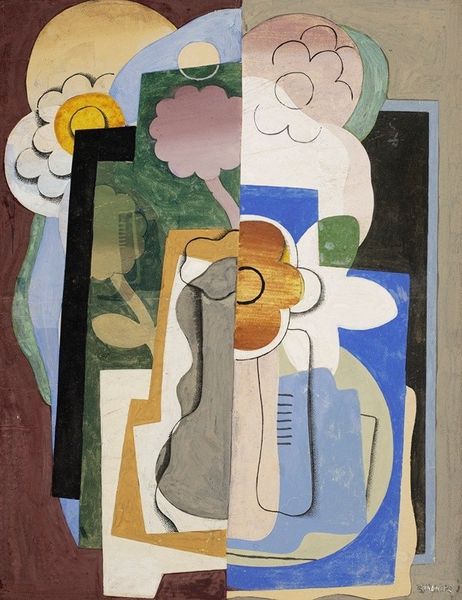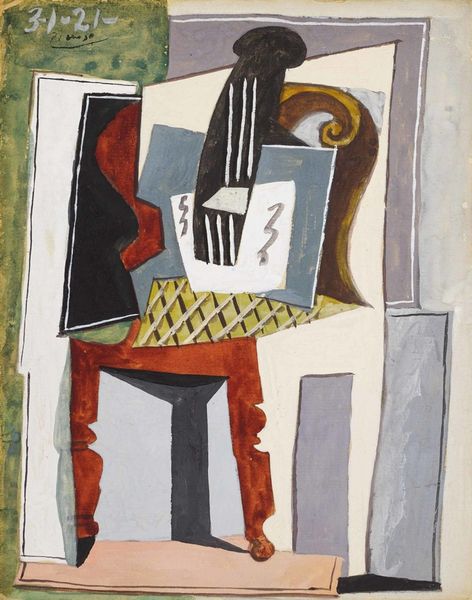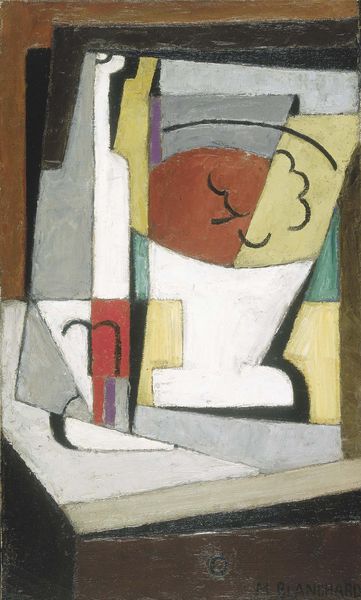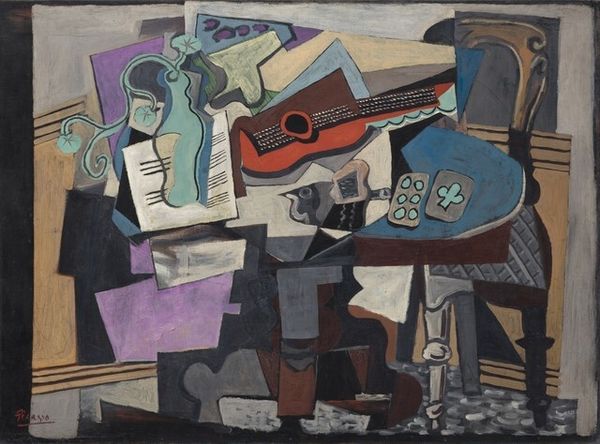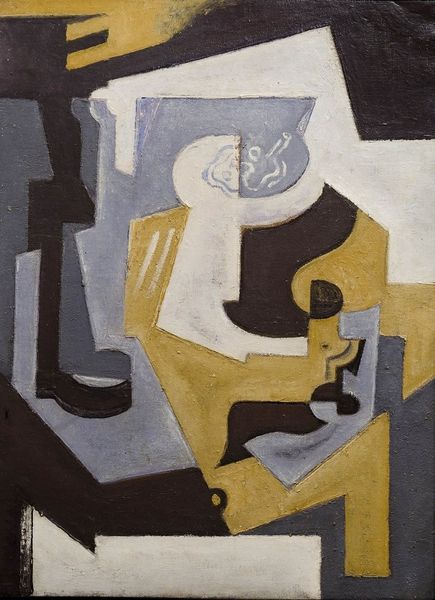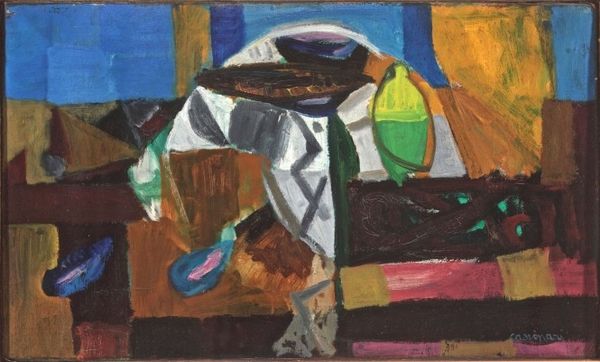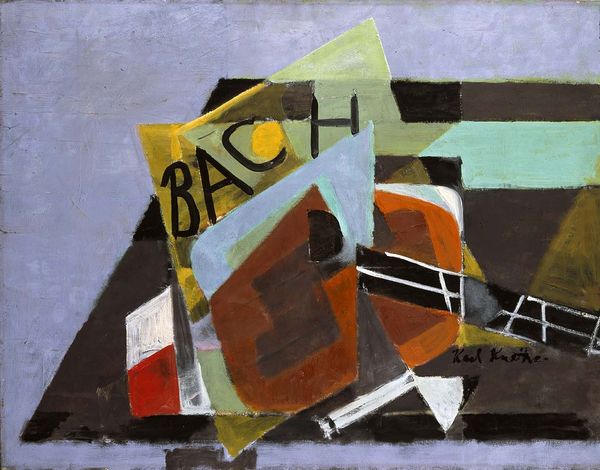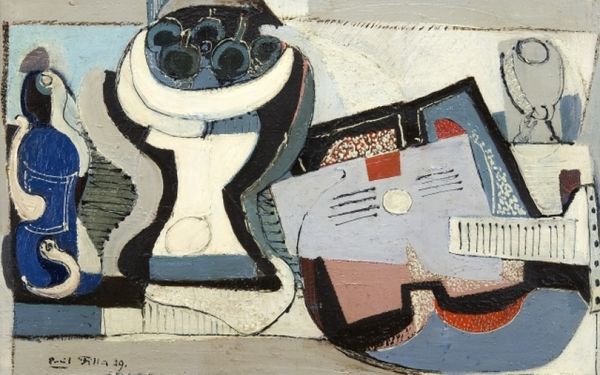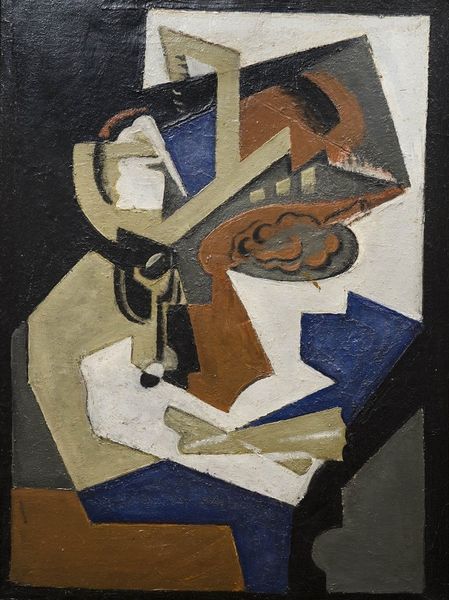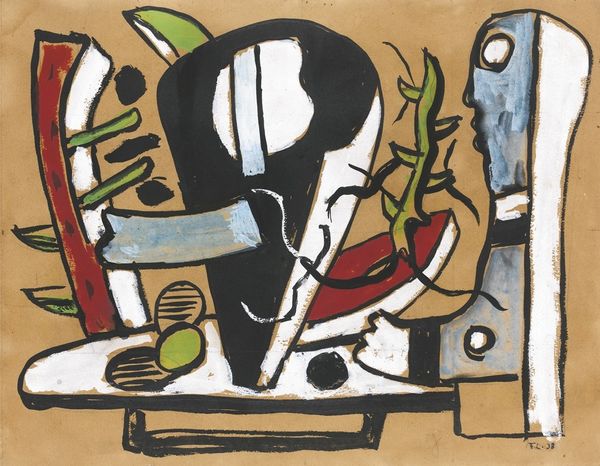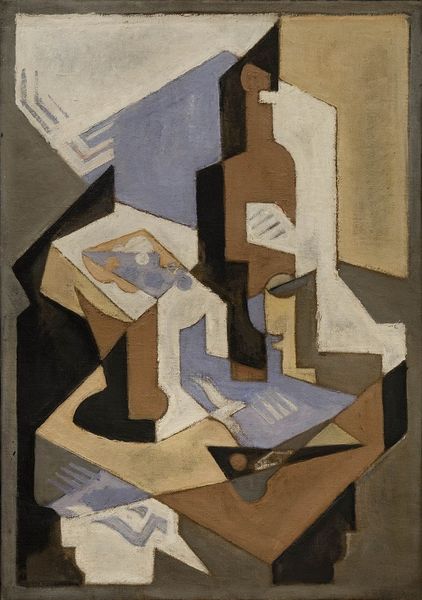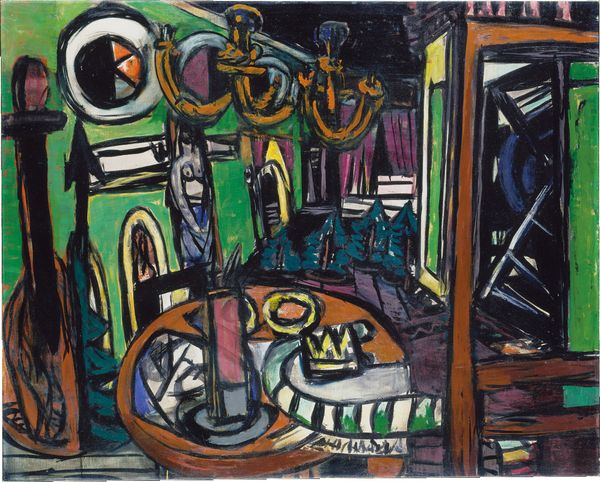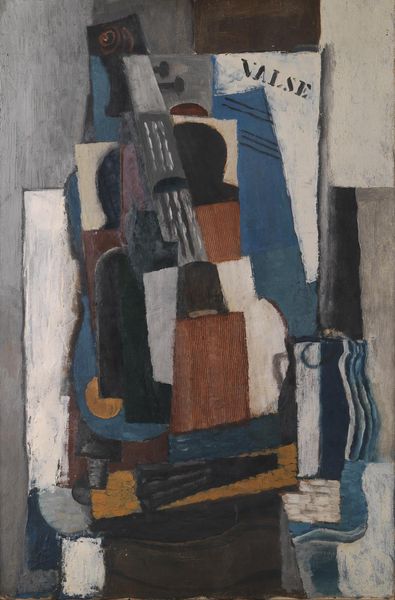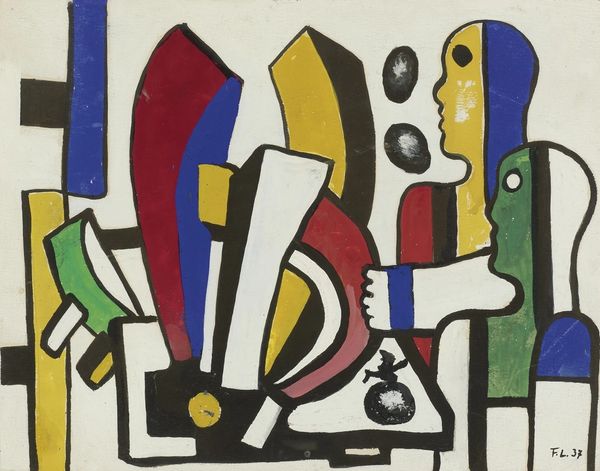
collage, painting, oil-paint
#
cubism
#
collage
#
painting
#
oil-paint
#
geometric
#
modernism
Copyright: Public domain US
Curator: Picasso's "Partition, bottle of port, guitar, playing cards," dating from 1917, is an intriguing example of synthetic cubism. Look closely—it brings together oil paint, collage, and assemblage techniques. Editor: Instantly, I'm struck by the strange sense of stillness. It's a tableau of pleasure, yes, but oddly muted... like a party that never quite began. Is it the fragmented forms that keep it distant, you think? Curator: The fragmentation is crucial, of course. We see Picasso actively engaging with the materials at hand to disrupt conventional representation. Look at how the pasted paper interacts with the painted surfaces, creating a complex layering of textures and meanings. The guitar, port, music—these were readily available bourgeois pleasures. Editor: Layering...that's key. I almost feel like I could peel back those geometric layers to reveal... what? Picasso's state of mind, perhaps? A half-finished song? Or maybe just another bottle of port? Curator: I'd argue it reflects broader anxieties about labor, leisure, and the market within modern experience. Notice how these elements are strategically arranged to draw attention to their commodity status, a stark comment given it's near the end of the First World War, with all its related supply chain breakdowns. The materials become metaphors. Editor: You know, seeing the "OPOR TO" on the bottle, I’m thinking of the ports of trade, and it feels to me, personally, like Picasso’s trying to make the painting *itself* a port of trade. He wants to pull objects into new spaces of contemplation and feeling. Curator: I agree that he certainly wants us to contemplate new space—the conceptual space between artwork and viewer, perhaps even between representation and object. He wants us to reckon with this disruption of expectation, and through our reckoning to somehow understand and critique the conditions of modern making. Editor: Ultimately, it feels more like a meditation on absence and presence, doesn’t it? Those fragmented forms… They suggest something hidden, a void that invites our own projections, filling in what's missing and almost demanding an impossible story out of these very, very still objects. Curator: Precisely. It's a negotiation of surface and depth, production and reception...all those very ideas coming together through objecthood itself. Editor: Yeah. You’ve nudged me closer to understanding it, that's for sure. Thank you for guiding my way. Curator: You’re welcome! Perhaps there's one more nuance that you see.
Comments
No comments
Be the first to comment and join the conversation on the ultimate creative platform.
